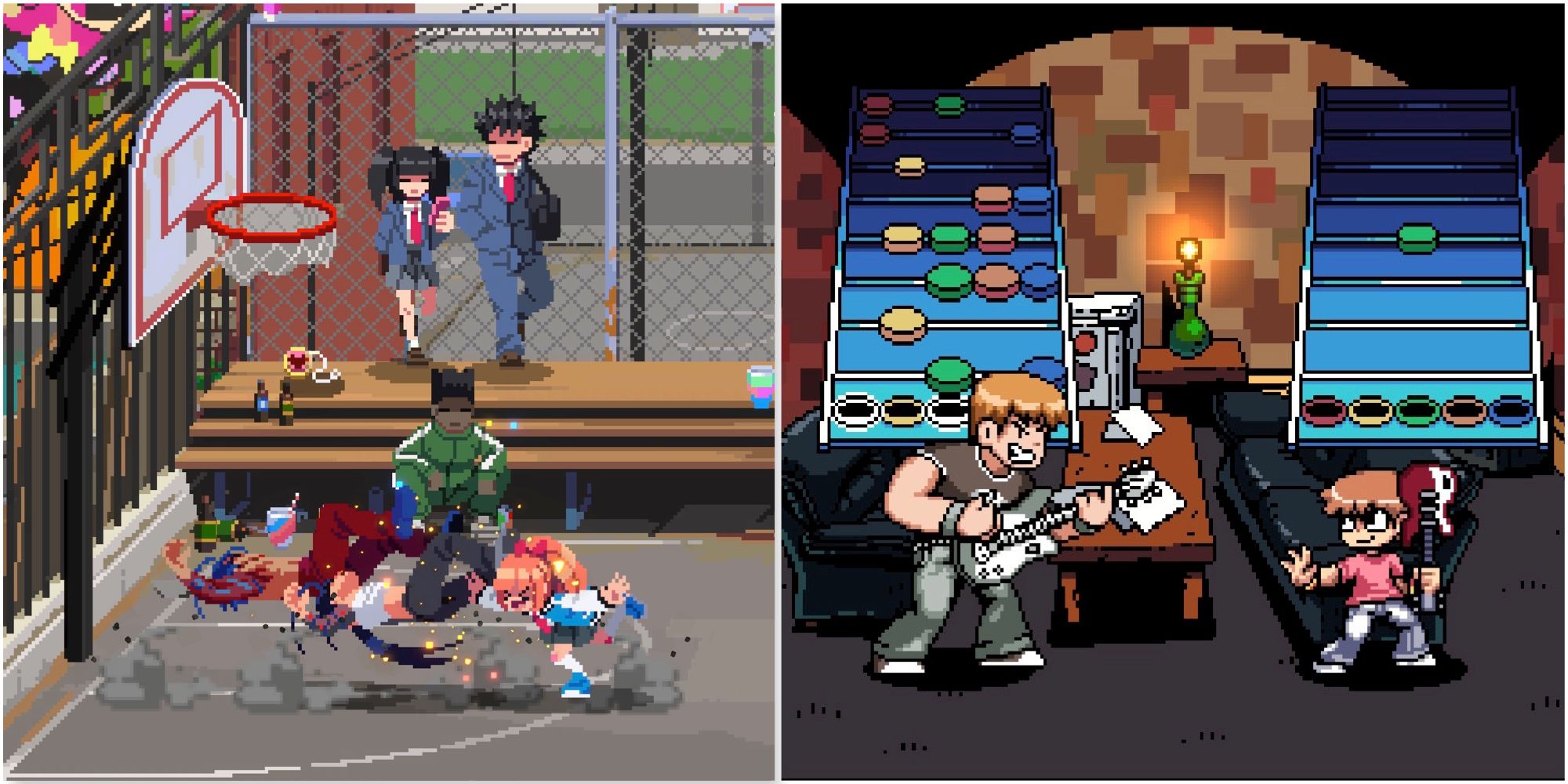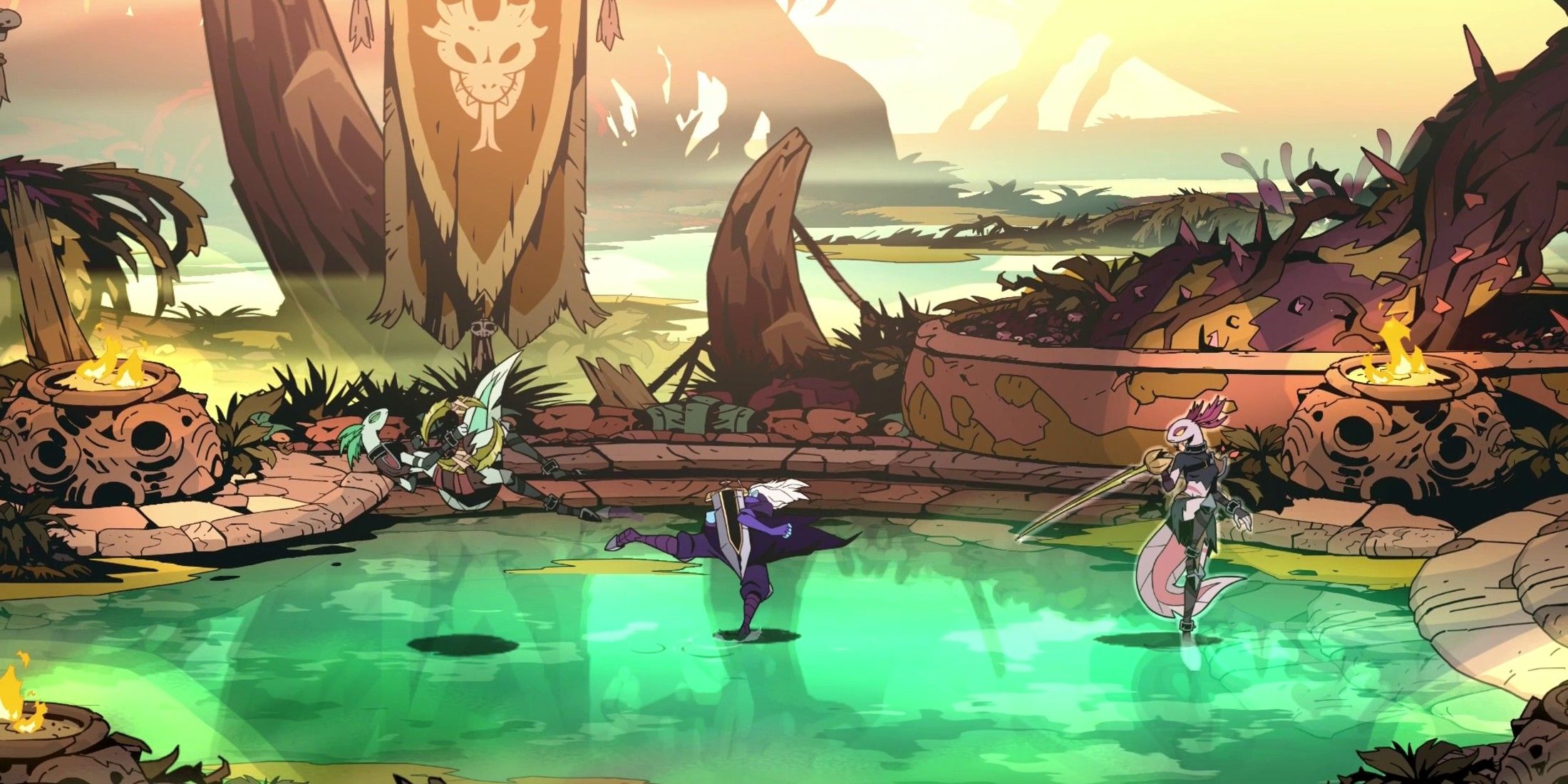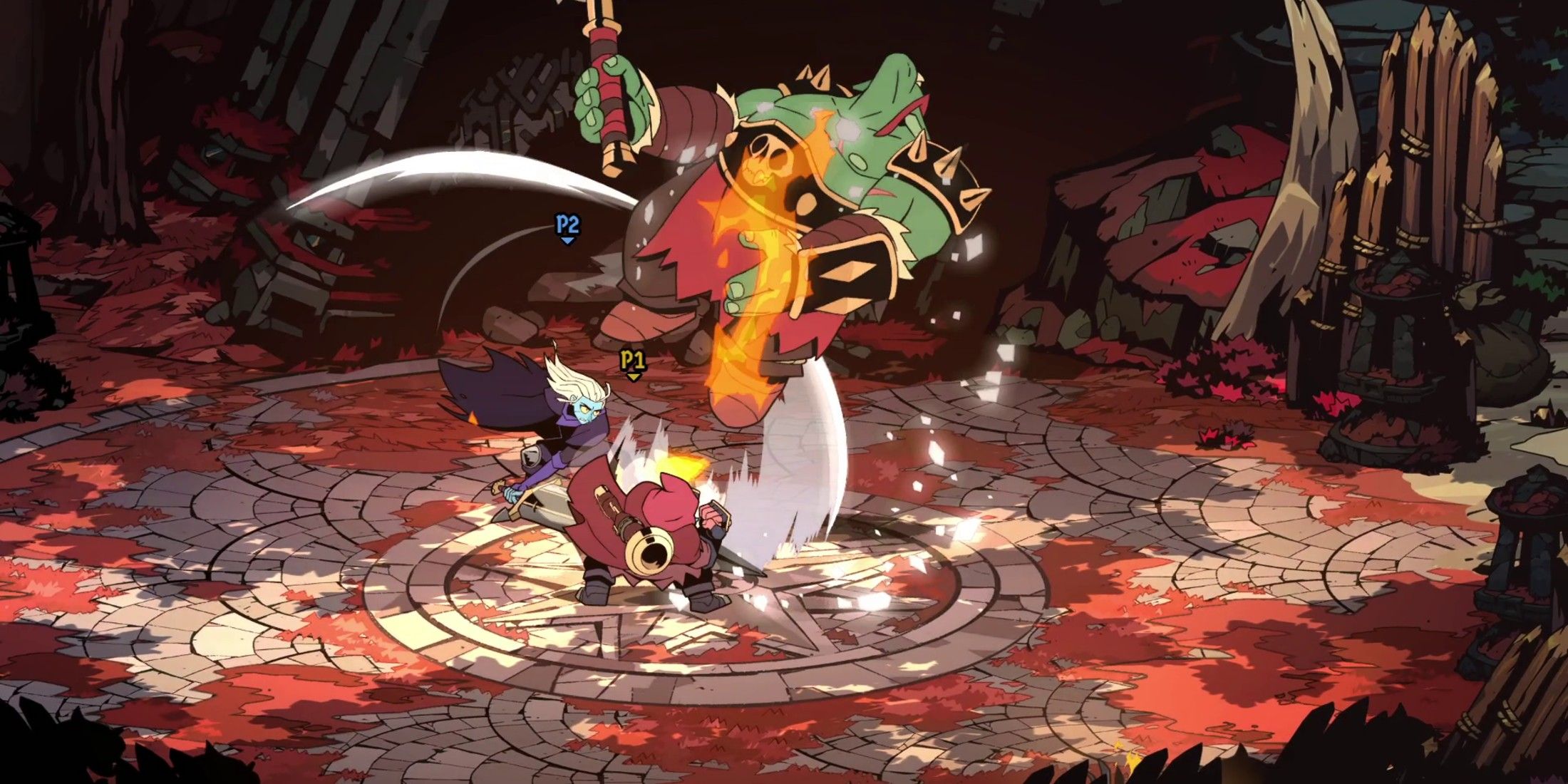Following its work on 2020’s much-loved Streets of Rage 4, developer Guard Crush Games got hard at work planning out its next title. Recently revealed as Absolum, Guard Crush’s latest project is an addictive blend of classic beat ’em up gameplay, RPG elements, and roguelike structure and progression. While there have been plenty of beat ’em up/roguelike hybrids and beat ’em up games that incorporate RPG-style character progression and customization, there aren’t many titles that mix all of these together, which immediately helps Absolum stand out among 2025’s crop of indie titles.
Game Rant recently attended a hands-on preview event for Absolum. Afterward, we sat down with several key members from Absolum‘s development teams to discuss how the title came about, its inspirations, the challenges of working on an original IP after established franchises like Streets of Rage, and more. Joining us were publisher Dotemu’s CEO Cyrille Imbert, Absolum‘s lead designer Jordi Asensio, art director Maxime Mary, and producer Micke Moisa. This interview has been edited for brevity and clarity.

Related
6 Best Beat ‘Em Up With RPG Mechanics, Ranked
These modern Beat ‘Em Ups take some of the best features of RPGs and integrate them in exciting ways.
Absolum’s Origins and the Challenges of a New IP
Q: How did Absolum come about?
Imbert: Absolum came from two different factors. First of all, there was a desire to collaborate again with Guard Crush Games and build on what we had achieved with Streets of Rage 4. Secondly, we both wanted to improve on the beat’em up formula, but this time set within a fantasy universe; we ended up creating a new IP. To realize this vision, we had to find the perfect partner to handle the art of the game, and that’s why we contacted Supamonks.
Q: What were some of the challenges that arose from creating a brand-new, original IP versus an established license?
Imbert: The creative process is completely different. Instead of getting inspired by some existing material, you have to create everything. Everybody on the project has their own vision and ideas on how to create this new universe, but everyone needs to work towards the same goal with the same constraints. Finally, you have to make everything coherent. This is a lot of teamwork and team effort, but as time goes by, you get to know each other and manage to make the most of every idea.
Q: When following up Streets of Rage 4, was the intention always to do another beat ‘em up?
Imbert: Yes! At Dotemu, we just love beat’em up games. Even after the success of Teenage Mutant Ninja Turtles: Shredder’s Revenge, that’s something we still wanted to work on – that feeling was even reinforced. Of course, our first collaboration with Guard Crush on Streets of Rage 4 was very successful on many levels, so it was a no-brainer for us and for Guard Crush to create together again.
Blending Beat ’em Up Gameplay with RPG Mechanics and Roguelike Progression in Absolum
Q: Was Absolum always positioned as a roguelike, or did that come about as a way to help structure and balance the various RPG mechanics in the game?
Asensio: It was more of a roguelike at first, but after a year of development, we shifted more toward roguelite. With that shift came many new challenges, like mixing a skill-based type of game with RPG mechanics and meta-progression upgrades. It was quite difficult because it was a unique concept, and we hadn’t any real references to look at outside Absolum, but it was exciting too, and we’re happy with the result.
Q: RPG and beat ‘em up hybrids are rare, and it’s hard not to think of classics like Treasure and Sega’s Guardian Heroes when playing Absolum. What were some of Absolum’s main inspirations during the design phase?
Asensio: I’m a big fan of Guardian Heroes on the Sega Saturn and Dungeons & Dragons: Shadow over Mystara from the arcade. These games were ahead of their time—crazy, adventurous experiences with branching paths, character growth, tons of secrets, and unforgettable moments. Yet, I’ve always felt that they never fully reached their potential. I’ve always dreamed of creating something in their lineage—mixing modern game design with arcade gameplay and even tabletop RPG elements.
Q: What does the overall meta-progression in Absolum look like? How does the team balance a satisfying power curve with maintaining the game’s challenge?
Asensio: Conceptually, it’s divided into two categories: Power upgrades and Variety upgrades. Power upgrades give more chances to the player to beat the game with things such as a resurrection, more gold to buy stuff, dealing more damage, gaining more healing points, etc. Variety upgrades grant more ways to enjoy the game, such as more moves and magic to build your character with, as well as more paths to explore.
As for how you unlock them, there’s the classic “in hub shops” but also the more organic “completing quest” way. The many paths are also not equal in terms of difficulty and rewards, so players can take more challenging paths if they feel like it.
Q: The branching paths present in each segment of Asbolum offer some nice replayability, but they also seem to indicate subtle differences in difficulty or challenge that the player has some agency over. Was this an intentional design choice to allow players to choose an optimal path based on their character selection and build?
Asensio: Yes, it was. You cannot prevent players from optimizing, so it might as well be intentional and well thought out. However, we’re talking endgame stuff here, and the way paths in Absolum are thought of is that you discover them little by little, and quests make you wander around and try to see all the paths. Before optimizing, you have an adventure to live.
Putting Together Absolum’s World, Art Style, and Atmosphere
Q: Absolum features striking, hand-drawn visuals that call to mind iconic comic artists like Mike Mignola and Andrew MacLean with their bold lines, bright colors, and heavy use of shadow. What are some of the primary inspirations for Absolum’s art direction?
Mary: The inspirations come from Mike Mignola or Andrew MacLean (the latter is very high on the list of references), but also from Franco-Belgian comics, of which I’m a big fan. Authors like Franquin (Spirou) or Uderzo (Asterix), who cradled my childhood, but also Christophe Blain (Gus) or the Kerascoets (Beauty).
I wanted to get away from the despair and realism found in the artistic directions from Mike Mignola (Darkest Dungeon, Sworn, etc.) and take a more semi-realistic approach, also inspired by the world of animation. Last but not least, some monsters feature nods to the work of Akira Toriyama.
Q: Can you walk us through some of the inspirations for Absolum’s fantasy setting and world?
Mary: We drew inspiration from classics such as Dungeons & Dragons: Shadow Over Mystara to give players an experience close to their arcade memories. Little by little, we incorporated more personality into the Talahm universe to create a world of our own. Absolum‘s fantasy is based on worlds such as Dungeons & Dragons and Lord of the Rings, but it also borrows from Lovecraftian myths. As I said earlier, we wanted to refer to the heroic fantasy classics to keep in line with the Dotemu remasters and original games inspired by beloved franchises, which nostalgic audiences are very fond of. To make something new out of something old, with a twist.
Q: Absolum’s score is one of its definitive features, coming from renowned composer Gareth Coker. What was it like working with Coker to help create Absolum’s atmosphere and soundscape?
Moisa: When working with such a renowned composer, you might fall into the trap of trying to reproduce past works. This time, with Absolum being our first new IP and our fresh vision of beat ‘em ups, we wanted to create something totally new. Our goal was to use the music to elevate what you see on screen.
As we have a pretty peculiar game structure, it was challenging to adapt the music to it. We wanted to keep the feeling of progressive intensity in combat while having moments to breathe in between. It has been a long process of playing Absolum together and finding the right rhythm of gameplay while also finding the right tempo for the music.
Gareth has a unique process. He’s very hands-on. It’s not just about writing music for him, it’s about the connection to the game experience – and not just the visuals, but the gameplay too. It was also about understanding what the music tells you. There’s definitely a narrative part to music that is often overlooked. With Absolum, Gareth made sure to have important musical pieces return at the right moments throughout the experience. His production quality and speed of execution are outstanding. Every time he drops a new track, there aren’t many changes to request! All in all, making the music for this game with Gareth is a wonderful experience that allows us to define what Absolum is, and we really hope it will resonate with you.
[END]
Absolum is currently in development and will be released on Nintendo Switch, PC, PlayStation 4, and PlayStation 5.
















Leave a Reply